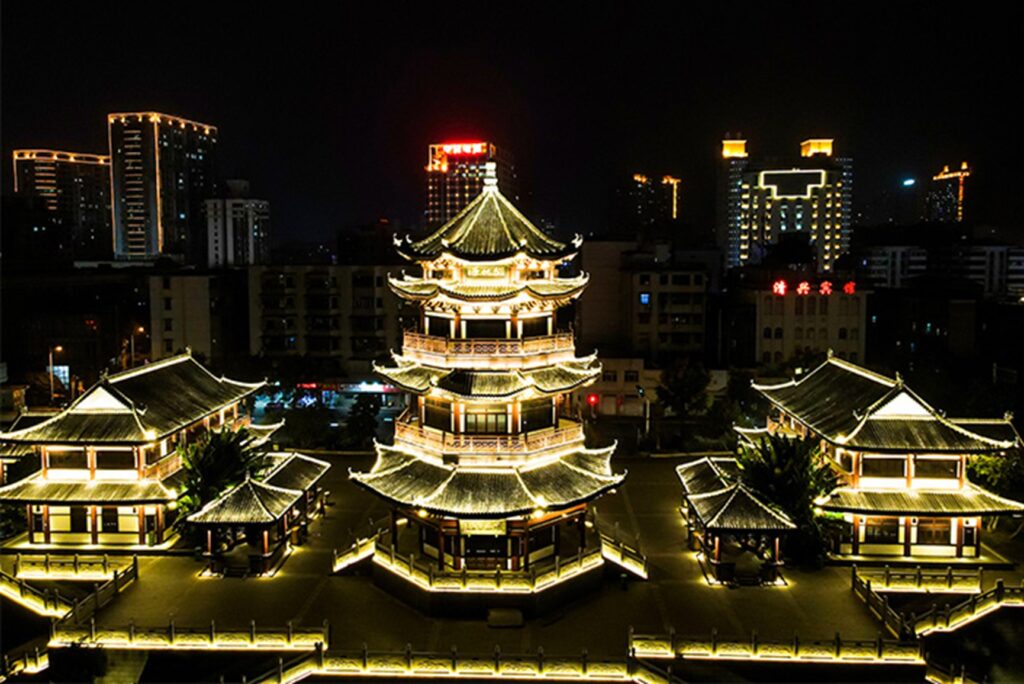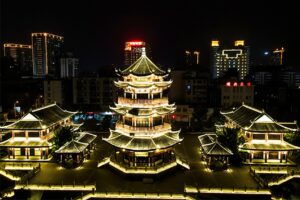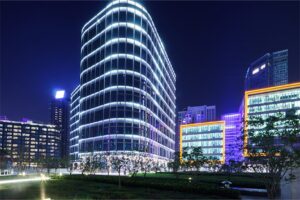Outdoor lighting design marries aesthetics with functionality. The right design not only elevates the appeal of the landscape but also bolsters the safety and ambiance of urban spaces. So, what should one consider when working on outdoor lighting design?

Tailor to the Landscape:
Outdoor lighting design should focus on the characteristics of the landscape. Every landscape is unique and demands a tailored lighting approach. For instance, parks may benefit from soft lighting to evoke warmth and romance.
In contrast, commercial areas and squares might require bright, colorful lights to draw attention. Thoughtful lighting can accentuate the features of the landscape, amplifying its beauty.
Light Placement and Angle:
The position and orientation of lights are crucial in outdoor lighting design. A well-considered arrangement can imbue the landscape with depth, emphasizing focal points.
The angle of the lights should account for the viewer’s position and the landscape’s layout. Tweaking the angle can produce diverse shadow effects, enriching the scene’s three-dimensional feel and aesthetic appeal.

Color Considerations:
Color plays a pivotal role in lighting design. With an array of lamp colors, you can impart varied moods to the landscape.
While cooler hues might lend a serene, mysterious ambiance, warmer tones can inspire warmth and romance. However, avoid overly stark or monotonous color schemes that might detract from the overall presentation.
Prioritize Energy Efficiency and Sustainability:
Modern outdoor lighting design champions energy conservation and eco-friendliness. LED lighting, known for its longevity and eco-friendly properties, should be a top choice.
By using LEDs and efficient control systems, you can minimize energy waste, promote resource conservation, and bolster the sustainability of your lighting design.

In conclusion, when undertaking outdoor lighting design, it’s essential to heed the landscape’s unique characteristics, consider light placement and angle, make smart color choices, and emphasize energy efficiency and sustainability. A holistic approach ensures that the design enhances both the landscape’s beauty and its utility, contributing to the city’s enchanting nocturnal vista






